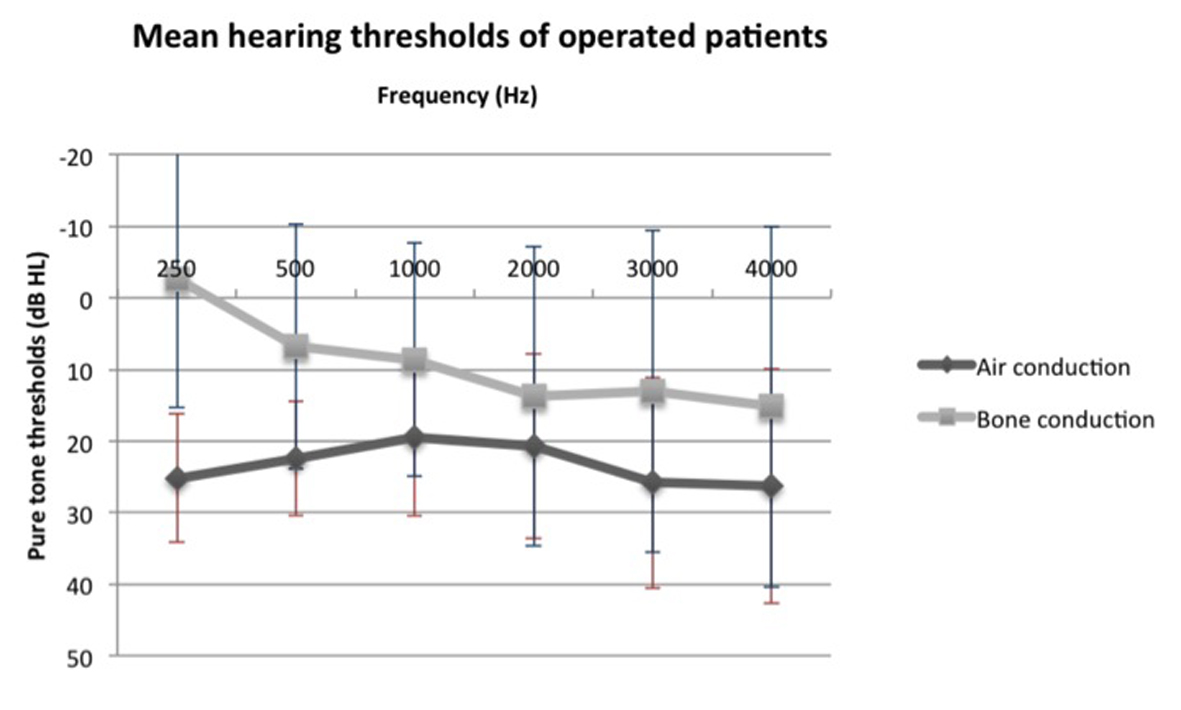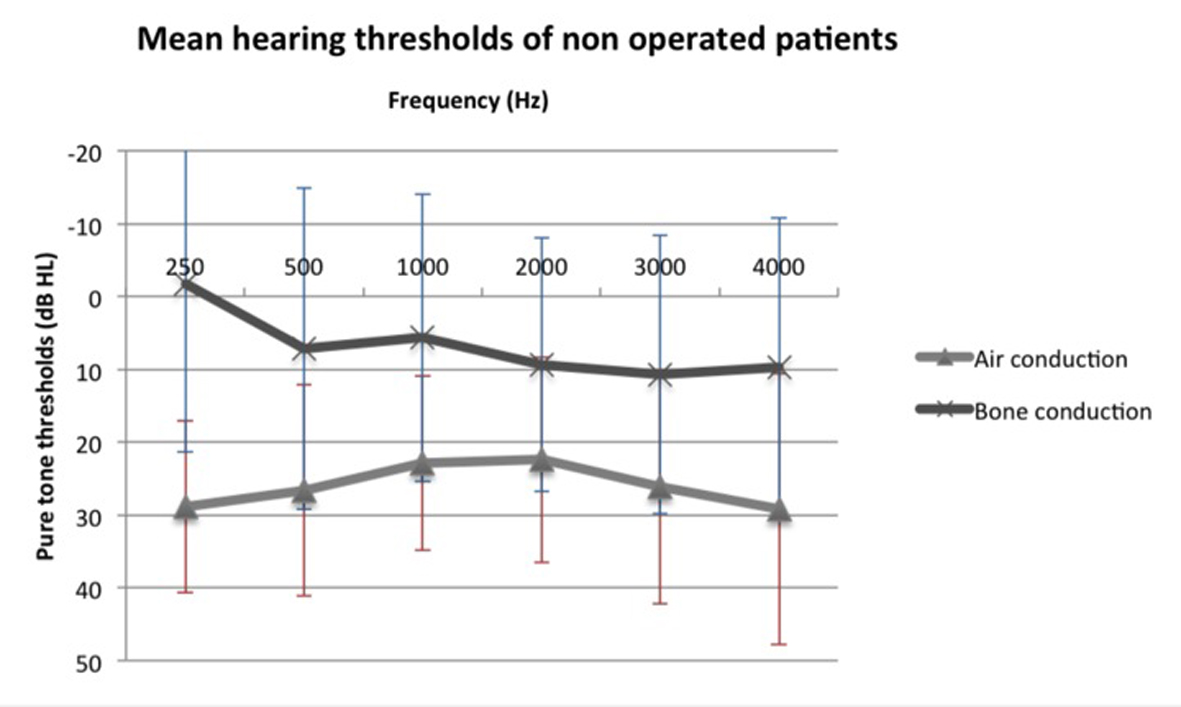
Figure 1. Mean air and bone conduction thresholds of operated patients before surgery.
| Journal of Clinical Medicine Research, ISSN 1918-3003 print, 1918-3011 online, Open Access |
| Article copyright, the authors; Journal compilation copyright, J Clin Med Res and Elmer Press Inc |
| Journal website http://www.jocmr.org |
Original Article
Volume 7, Number 5, May 2015, pages 308-314
Common Features in Patients With Superior Canal Dehiscence Declining Surgical Treatment
Figures


Table
| Number of patients | Ratio of patients (%) | P-value | |||
|---|---|---|---|---|---|
| Operated group (N = 28) | Non-operated group (N = 34) | Operated group (N = 28) | Non-operated group (N = 34) | ||
| Symptoms | |||||
| Cochlear symptoms | |||||
| Hypoacousis | 17 | 22 | 60.7 | 66.7 | 0.091 |
| Tympanophony | 12 | 1 | 42.9 | 3 | < 0.001 |
| Autophony | 28 | 9 | 100 | 27.3 | 0.004 |
| Tinnitus | 23 | 19 | 82.1 | 57.6 | 0.004 |
| Pulsatile tinnitus | 25 | 7 | 89.3 | 21.2 | 0.011 |
| Phonophobia | 26 | 8 | 92.9 | 24.2 | 0.008 |
| Aural fullness | 26 | 10 | 92.9 | 30.3 | 0.019 |
| Other forms of hyperacousis | |||||
| Footstep sound | 16 | 1 | 57.1 | 3.0 | < 0.001 |
| Eating sound | 16 | 1 | 57.1 | 3.0 | < 0.001 |
| Oculophony | 17 | 4 | 60.7 | 12.1 | < 0.001 |
| Sense of vibration | 15 | 1 | 53.6 | 3 | < 0.001 |
| Vestibular symptoms | |||||
| Vertigo | 9 | 7 | 32.1 | 2.2 | 0.012 |
| Vertigo with effort | 9 | 2 | 32.1 | 6.1 | 0.009 |
| Imbalance/dizziness | 25 | 16 | 89.3 | 48.5 | 0.024 |
| Motion dizziness | 17 | 9 | 60.7 | 27.2 | 0.017 |
| Tullio phenomenon | 16 | 3 | 57.1 | 9.1 | 0.002 |
| Oscillopsia | |||||
| At rest | 12 | 2 | 42.9 | 6.1 | 0.008 |
| With walking | 10 | 0 | 35.7 | 0 | < 0.001 |
| With effort | 14 | 0 | 50.0 | 0 | < 0.001 |
| Signs | |||||
| Tuning fork at malleolus | 10 | 2 | 35.7 | 6.1 | 0.003 |
| Vertigo induced by pneumatic speculum | 12 | 5 | 42.9 | 15.2 | 0.010 |
| Valsalva manoeuvre | 13 | 1 | 46.4 | 3 | < 0.001 |
| Hennebert | 1 | 0 | 3.6 | 0 | 0.157 |